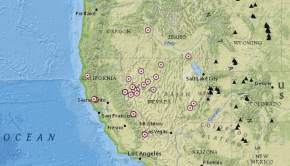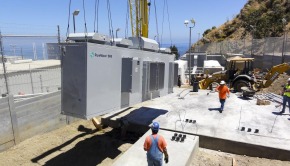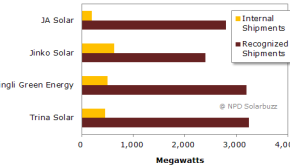Australia Falls Out Of The Top 15 Utility-Scale Solar Countries
November 4th, 2014 by Guest Contributor
RenewEconomy.
Sophie Vorrath.
The global utility-scale solar market has clocked its fifth consecutive year of record growth, with newly released data showing total capacity has now reached 30.3GW, up from 21.5GW at the start of 2014.
Figures released on Tuesday, along with the chart below, show that at the end of September the US was leading the big solar stakes with 407 utility-scale plants, amounting to a total installed capacity of 7.08GW. China comes in a close second with 245 plants, totalling 6.5GW; followed by Germany, with 281 plants and 3.46GW total installed utility-scale capacity.
South Africa wins the prize as the newest country to join the top 10, following the commissioning of the 75MW De Aar 3 project in August. The Northern Cape project, at over 85MW peak, also gets special mention as one of the largest amorphous silicon solar cell installations in the world.
Where is Australia, you ask? Still wallowing in the lower regions of the list at number 31, behind the Dominican Republic. According to Wiki-Solar’s Philip Wolfe, this should improve once the 56MW Moree solar farm in NSW is connected to the grid, and also the 153MW solar installations at Broken Hill and Nyngan.
“Grid-feeding solar generation continues to dazzle, with records being broken all over the place”, said Wolfe.
“Our figures show the USA has become the first country to achieve 7GW of utility-scale PV capacity. Meanwhile the UK will probably be seen to have topped 2GW, when the summer’s completed projects are all entered onto the register.
“Japan and Chile continue to climb the table and, with substantial capacity still under development, will be vying for top-ten places before long.”
Source: RenewEconomy. Reproduced with permission.
Keep up to date with all the hottest cleantech news by subscribing to our (free) cleantech newsletter, or keep an eye on sector-specific news by getting our (also free) solar energy newsletter, electric vehicle newsletter, or wind energy newsletter.
-
Larmion
-
Ronald Brakels
-
juxx0r
-
Ronald Brakels
-
-
-
tibi stibi
-
Calamity_Jean
-
tibi stibi
-
-



























